Up Next

A mix of strategic boldness from Mercedes and an inch-perfect balancing act by Lewis Hamilton won them a race they shouldn’t have won.
It’s something of a novelty for Mercedes not to win by sheer bulldozing performance superiority, but it’s clear that the Red Bull-Honda challenge it faces in the 2021 Formula 1 season is very real.
“We don’t really have any strengths relative to them,” said Mercedes’ Andy Shovlin after forensically looking at the data from testing and this weekend, “and we’ve had a lot of years where we’ve been able to rely on straightline speed or high speed cornering or interconnected corners.
“But you look at it here and we weren’t taking any time out of them anywhere.
“There were a couple of corners they really took chunks out of us, in qualifying, the high speed, also Turn 9, 10, they were very strong there and that’s really the main thing.
“In qualifying we’re just bang on their pace in our best corners and they’re quicker in the others so we need a faster car, simple as that.”
But despite that, we got the dream gloves-off Hamilton-Verstappen duel that F1 has been longing for. It kept us on the edge of our seats for the duration but unpicking it all in hindsight, the key move was Mercedes bringing Hamilton in so very early for the first stop for what is always a strategically challenging track.
Controlling the heat-degrading tyres to get good stint lengths – even for the standard Bahrain two-stopper – is not easy for either strategists or drivers. Coming in so early was a real gamble.
That early stop bought Hamilton track position – which around a windy Sakhir with the latest generation of aerodynamically nervous cars was gold dust. It was the sort of bold move the chaser can afford to make – a role that used to be reserved for Red Bull.
Where was the downside risk for Mercedes? If it had done the same, conventionally-spaced stops as Red Bull, it was sure to be beaten.
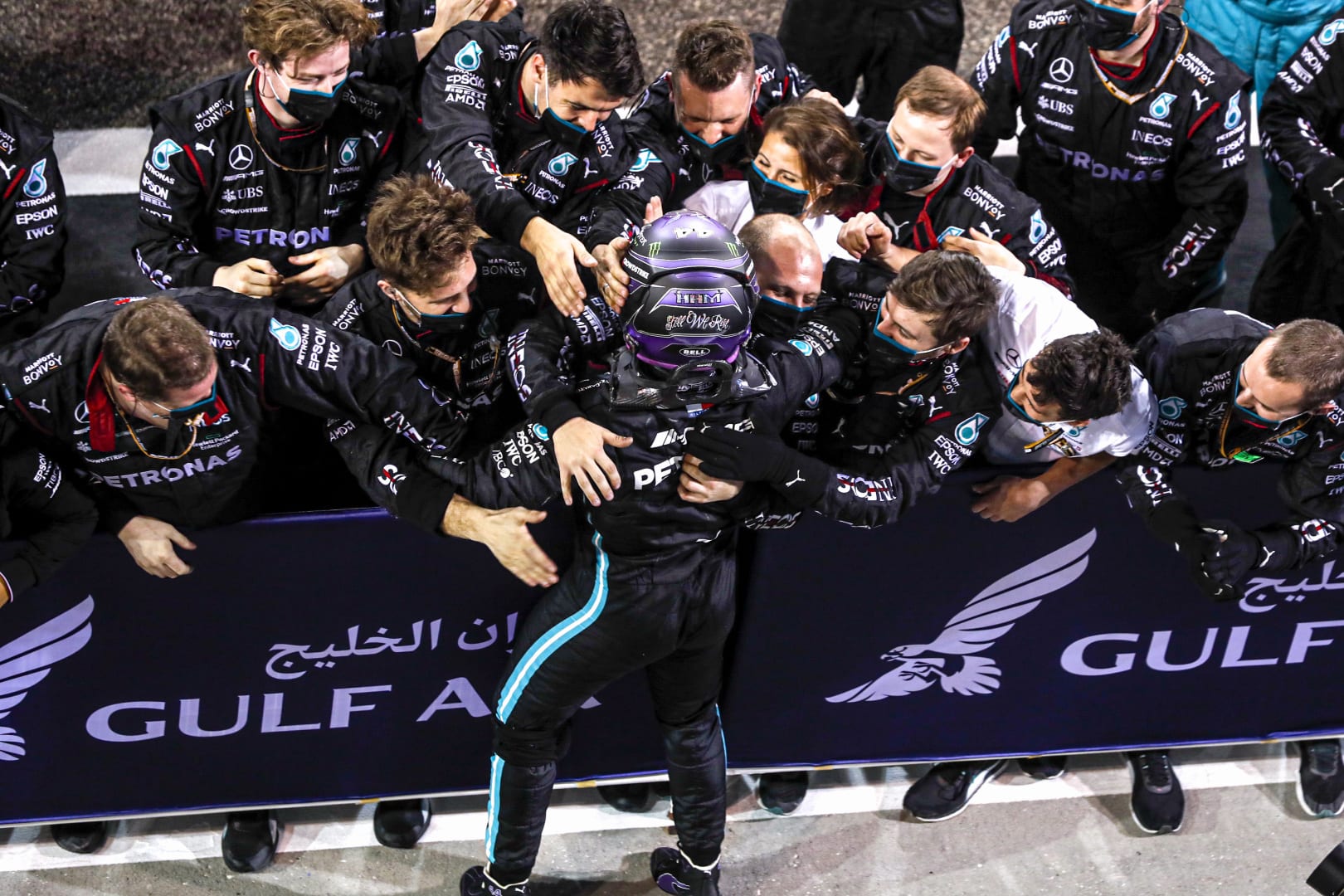
It guaranteed Hamilton a very difficult defensive final stint – even more so after a delay at Valtteri Bottas’s second stop prevented him from being used as a strategic pawn against Red Bull – with Verstappen on much newer tyres chasing him down.
The track position was bought by the Mercedes strategy team. But maintaining it required a drive of incredible discipline, caught as Hamilton was between a rock and a hard place, his rear gunner gone and Verstappen coming at him hard with many laps to go.
“I thought, ‘Jeez, there’s just no way we’re going to be able to pull this off with these tyres dropping off,’ particularly in the last 10, 15 laps” :: Lewis Hamilton
Verstappen, having set pole by 0.4s in a Red Bull that was way faster through Turns 5-6 and 10 and with a new Honda power unit that kept delivering full power after the Mercedes had begun de-rating, was forced into being the aggressor, the chaser. Which was not at all the sort of evening he’d envisaged. But one to which he’s eminently suited.
But it wasn’t as simple as charging up to the slower car and overtaking it.
“Make sure you have enough tyres left by the time you get there,” warned engineer Gianpiero Lambiase to Verstappen as the Red Bull rejoined after its second stop, 8.8s behind Hamilton but on 10 lap newer tyres and 15 laps to go.
That whole balancing act was the key to a quite sensational race. How much to take out of the tyres and when.
“I thought, ‘Jeez, there’s just no way we’re going to be able to pull this off with these tyres dropping off,’ particularly in the last 10, 15 laps,” recalled Hamilton.
“So I was trying to just… it’s not my first rodeo – I was trying to find the right balance: not taking too much out of the tyres but not doing the same times as him because, when he comes out, he’s going to be much, much faster on fresh tyres, so I was trying to eke-out that gap to around 10 seconds.
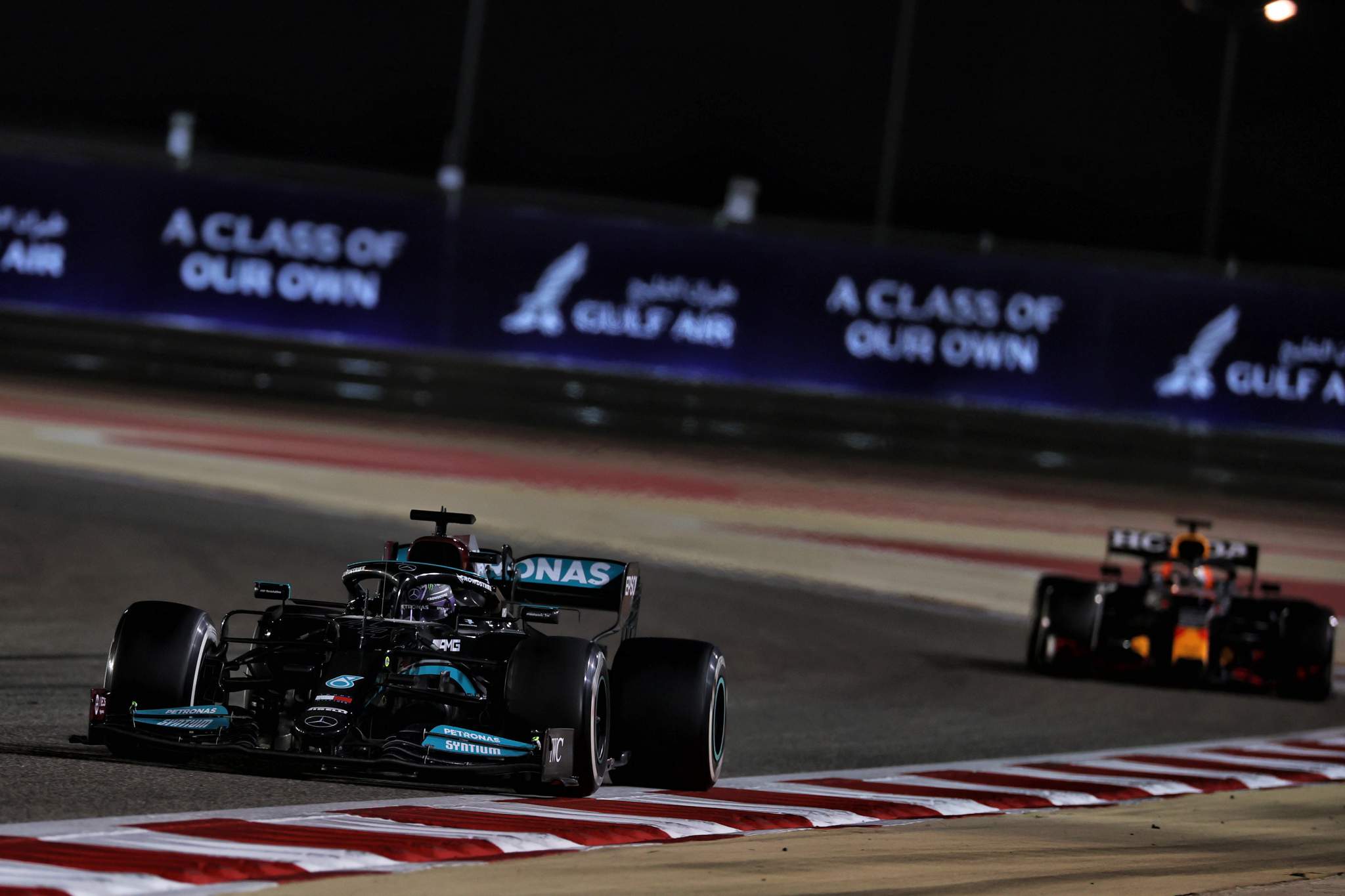
“He just started eating up into that gap, very, very fast. And then it stopped for a moment. I think I was able to pick up the pace but then the tyres were starting to drop again.
“When the team told me that he’s going to catch us with 10 laps to go, I knew we were sitting ducks at that point – but I just tried to remain positive and try to be just as inch-perfect as I possibly could be.”
How the race had got to this point was a twisting, turning story. Although Verstappen had secured that comfortable pole, got through Q2 on the mediums (as had the Mercedes), he was racing two Mercedes lined up right behind him on the grid while his own rear gunner Sergio Perez had missed Q3 on account of not getting his lap together on the mediums. He’d end up starting the race from the pitlane after the Honda cut out on the formation lap then miraculously restarted.
Mercedes was sure to use that two-against-one dynamic. The only way of preventing it would be for Verstappen to run off into the distance. But on delicate tyres on which you’re trying to stretch the stint lengths that wasn’t really feasible.
Verstappen was straight into the lead from Hamilton, with Bottas being mugged by Charles Leclerc’s over-qualified Ferrari as the race came under an almost immediate safety car to clear the crashed Haas of Nikita Mazepin from the Turn 2 barriers.
Three laps under the SC, closely followed by half-a-lap under a VSC to clear debris from a Turn 4 incident involving Pierre Gasly (who’d hit the back of Daniel Ricciardo’s McLaren) helped with the stint lengths but not by enough to change anything.
Verstappen played the restart perfectly, bunching up the field until the start-finish line to minimise the length of straight on which Hamilton could slipstream him, then making immediately for the inside line. He proceeded to pull himself out of DRS reach and kept the gap at 1.7/1.8s.
Mercedes was able to be bold because it was chasing and it had been smarter with its tyre selection. It was chasing because it was slower
But to do this he was having to push the tyres harder than he ideally would have liked. Hamilton was keeping him honest, intent on being within undercut range when the pitstop window opened.
This was probably Hamilton’s most impressive stint and the Mercedes was at its least disadvantaged to the Red Bull when they were on the medium tyres for some reason. But the hard tyre was better over a stint – and Mercedes had committed to it with two new sets for each car sitting in the garage.
Conversely, Red Bull had one set each of mediums and hards for Verstappen. In hindsight, that was probably a mistake. The range of the medium was around five laps shorter, and that would come to play a part in this race.
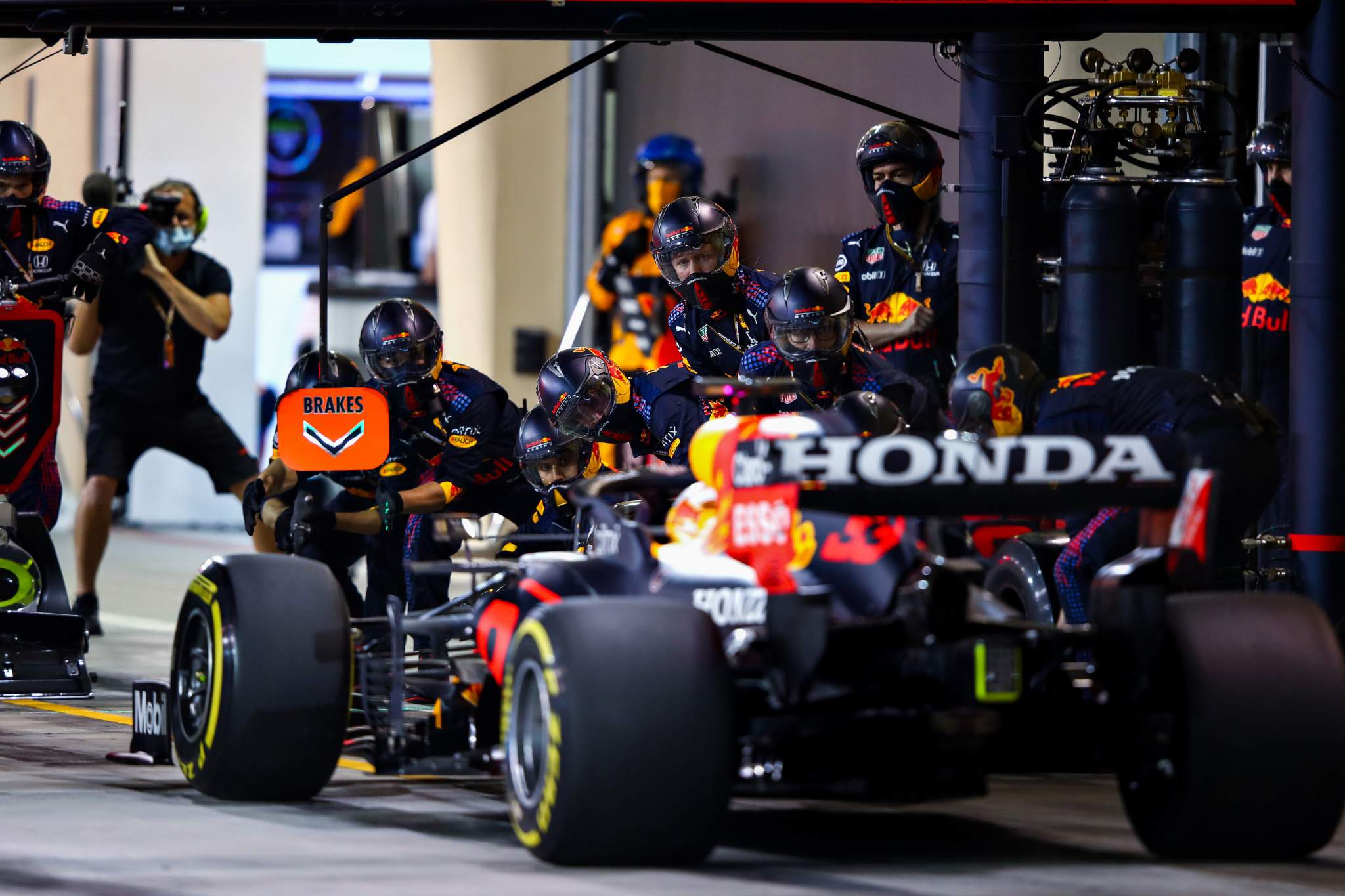
“Strategy-wise, we’ll have to analyse what we could have done better,” said Verstappen later. “Also, we didn’t have the tyres like they had. So, we didn’t really have a lot of flexibility in the strategy.”
Bottas had lost the chance of being anything other than a strategic pawn in this race by being 5s behind the lead battle by the time he retaliated on Leclerc on lap six.
The Red Bull/Mercedes trio left the midfield quickly behind. That best of the rest battle was bossed by Lando Norris’ McLaren, who had aggressively passed team-mate Ricciardo on the first lap and followed up with a ballsy move on Leclerc a few laps later.
That trio was never far clear of the next one comprising Lance Stroll’s Aston, Fernando Alonso’s Alpine and Carlos Sainz Jr’s Ferrari.
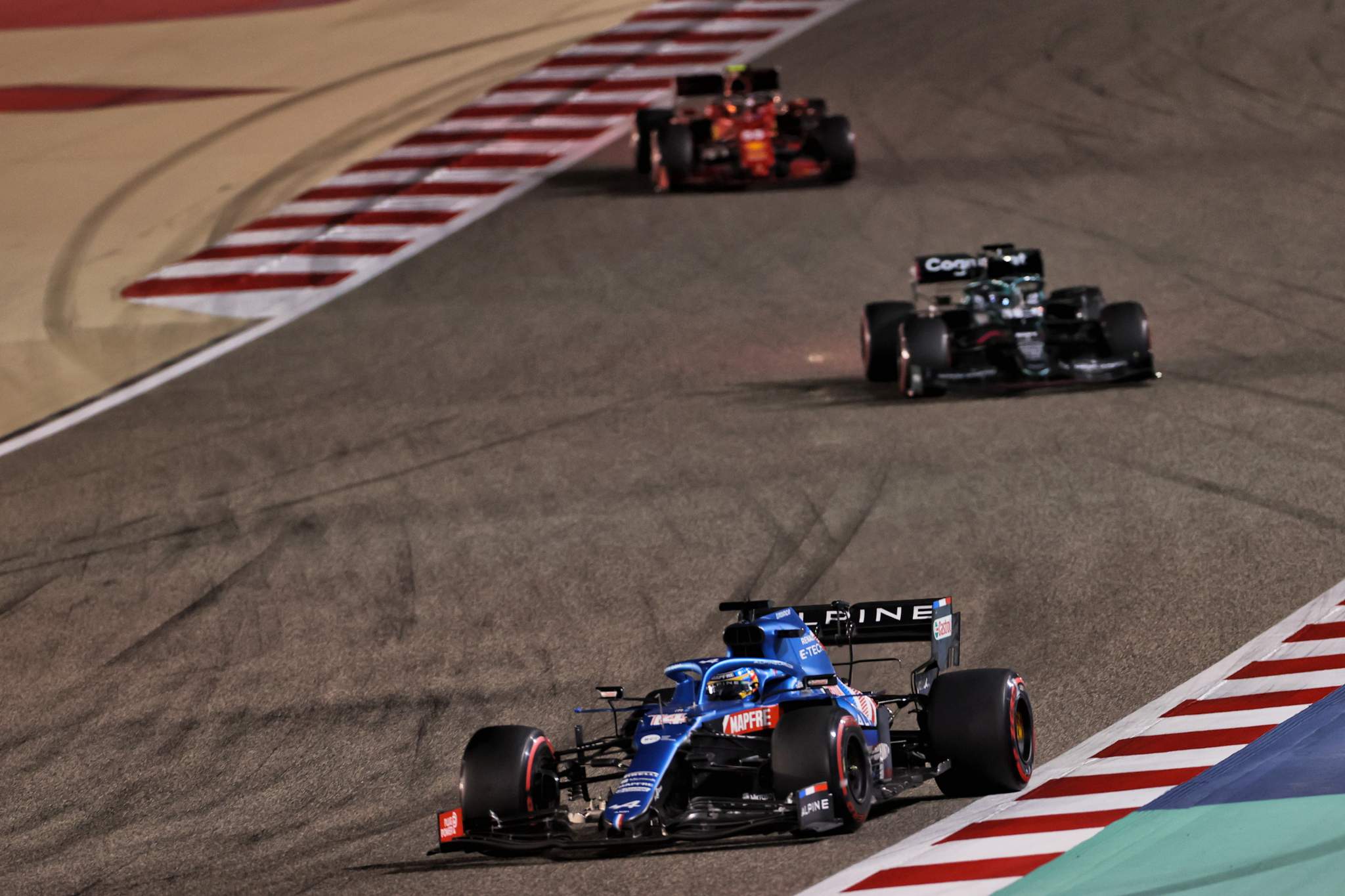
It was Alpine’s attempt at undercutting Alonso back past Stroll very early (lap 11) which triggered the break Mercedes was looking for. It initiated a cascade of undercut-defending stops in that part of the field – which opened up a gap to drop Hamilton into. Even if it was very early.
Hamilton was brought in for a new set of hards at the end of lap 13. That left a total of 43 laps for his next two sets of tyres, which is a lot around Sakhir, which places such an extreme heat-degrading stress on the left-rear.
It’s what gave him the track position which he used to win him the race. But he’d done well just to be within 1.8s of Verstappen after 13 laps (only 10 of them at racing speed admittedly).
In hindsight, Red Bull should have pitted Verstappen into that same gap at the same time and retained track position. But committing to such long subsequent stints would have been a risky move for the leader to make – and may have lost him the race to a later-stopping Hamilton.
It would have been especially risky when Red Bull only had one set of hards, as one of the stints would have to be done on the less durable mediums. Mercedes was able to be bold because it was chasing and it had been smarter with its tyre selection. It was chasing because it was slower. Being bold may have backfired but it didn’t.
Verstappen had already lost track position the moment the number 44 Mercedes peeled off into the pitlane, so it made no sense to respond. There was a confidence there that it had performance enough to make the overtake on fresher tyres later on.
There was also the small niggle of Verstappen’s differential. It wasn’t locking to the extent that he had selected, so giving him less of an understeer balance and a bit of wheelspin out of Turn 1 on one side. That wasn’t going to be helpful to tyre life, so just swaying Red Bull more certainly away from stopping too early.
Hamilton pushed hard on his out-lap, just in case Red Bull had brought Verstappen in. That would come to have consequences too, for it abused Hamilton’s fresh tyres – and that inadvertently created the perfect early timing of his second stop.
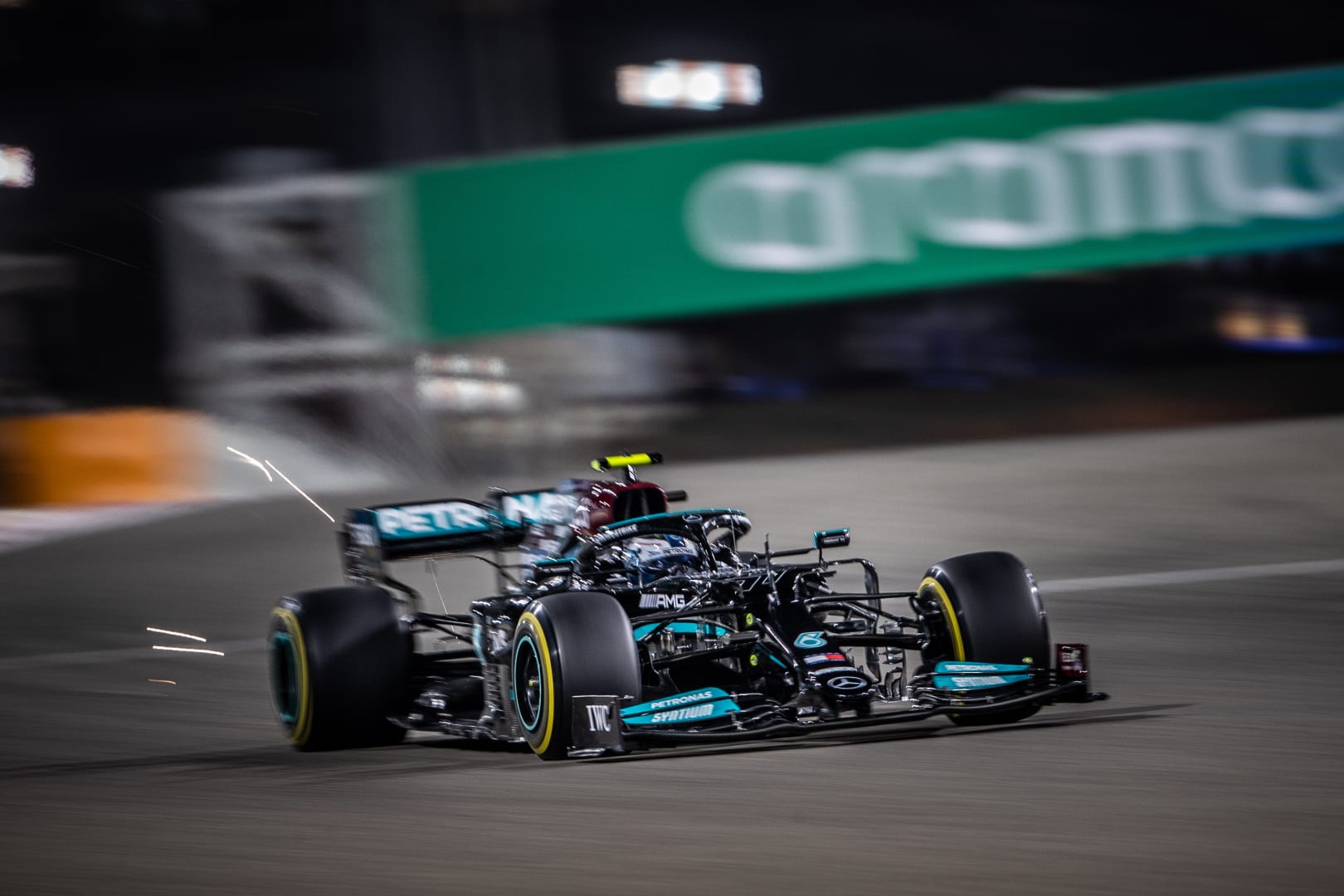
Meanwhile, Bottas was instructed to push as hard as he could into Verstappen’s 6.5s gap. He began lapping 0.4s faster than the Red Bull and was brought in on lap 16 for new hards.
Red Bull was obliged to respond with Verstappen on the next lap because such is the degradation rate here that Bottas’s new tyres would be around 2s quicker than Verstappen’s 17-lap old mediums. That was earlier than Red Bull would ideally liked to have stopped him and he rejoined 6.6s behind Hamilton. Bottas was playing his role perfectly in the team game.
Perez was doing well in the other Red Bull. He’d quickly scythed through the pack from his pitlane start, calm and efficient in his passing moves, not getting bogged down, keeping up a Verstappen-matching pace when in clear air.
He’d begin his final stint right in among the midfield, just ahead of Sainz, and would subsequently pick off Stroll, Ricciardo and Leclerc for a decent fifth place finish.
But he could play no part in supporting Verstappen from there. Max was on his own as Mercedes used Bottas to pull him into strategies which limited his attack on Hamilton.
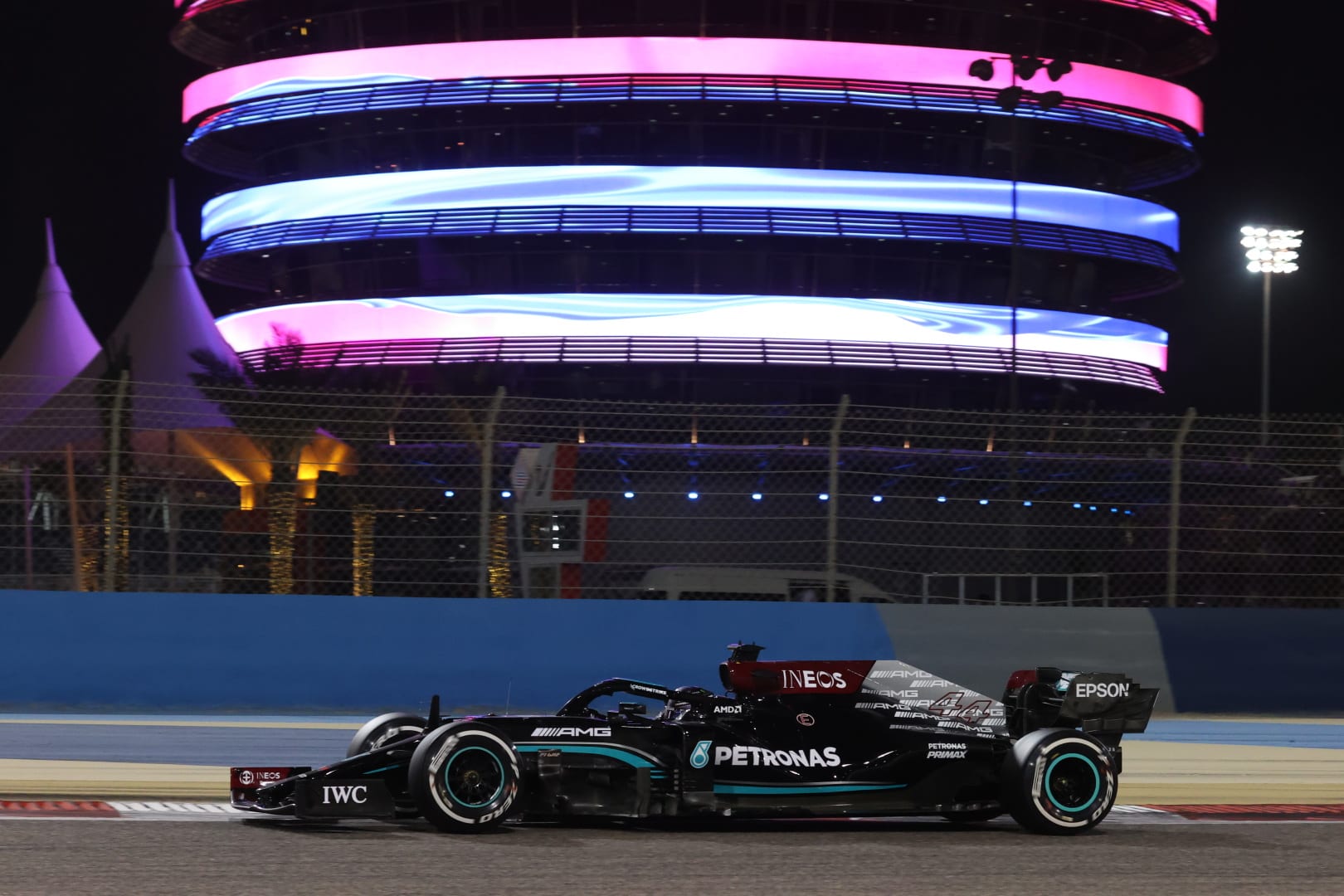
Hamilton’s second stint pace wasn’t great on account of the abuse he’d given his tyres on nailing his out-lap. He’d only been on them for 15 laps when he was called in – because Verstappen was catching fast and getting to within undercut range. Track position was everything in Mercedes’ game and it couldn’t be surrendered.
In he came on lap 28 for the other set of hards on which he’d need to cover the remaining 28 laps. That is a very long stint around here.
But that wouldn’t matter if Verstappen also had to do a long stint. Here’s where Bottas was going to be so useful again. Two laps after Hamilton’s stop he was brought in from 5s behind Verstappen. That new tyre advantage because of the high degradation would have meant Verstappen couldn’t have stayed out much longer than two more laps. Which would have made his tyres just four laps newer than Hamilton’s, with him still behind. If Red Bull kept him out longer than that, Verstappen would need to pass both Mercedes to win the race. Unlikely.
These were engineers’ theoretical niceties. Hamilton was in the seat, feeling the tyres and trying to pull off the unlikely. Not the time to have that discussion
But Red Bull was let off the hook thanks to a wheelgun problem on the right-front at Bottas’s stop. The gun didn’t connect properly with the nut, the car was lowered but had to be lifted again to properly attach the wheel. Over 8s was lost while this was sorted out – and Bottas was no longer a threat to Verstappen.
It was at this moment that Mercedes believed it had lost the race, for surely if Verstappen could run long now, his much fresher tyres into the final stint would take him past Hamilton’s old-tyred car on track.
Hamilton was asked to up the pace by 1s. “I can’t do that and make the distance,” he reported. Mercedes didn’t press the point.
The thinking on the pitwall was that if he could go faster, it would force Verstappen to use up his tyres quicker in pursuit and that they’d be spent before he got to Hamilton.
It wouldn’t matter then if Hamilton’s tyres were also spent so long as he held track position. If Verstappen had been forced to push harder the difference between the tyres would become ever-smaller. The more you have to abuse the tyres to get close to the car in front at an overheating track – which this is – the easier it becomes for the lead car, counter-intuitively.
But they were engineers’ thoughts, theoretical niceties. Hamilton was in the seat, feeling the tyres and trying to pull off the unlikely. Not the time to have that discussion.
Verstappen ran for an extra 11 laps after Hamilton, finally coming in at the end of lap 39. There were 17 laps left as he rejoined 8.8s behind. He’d need to catch at 0.6-0.7s per lap – but without using up the tyre’s energy by the time he arrived on Hamilton’s tail.
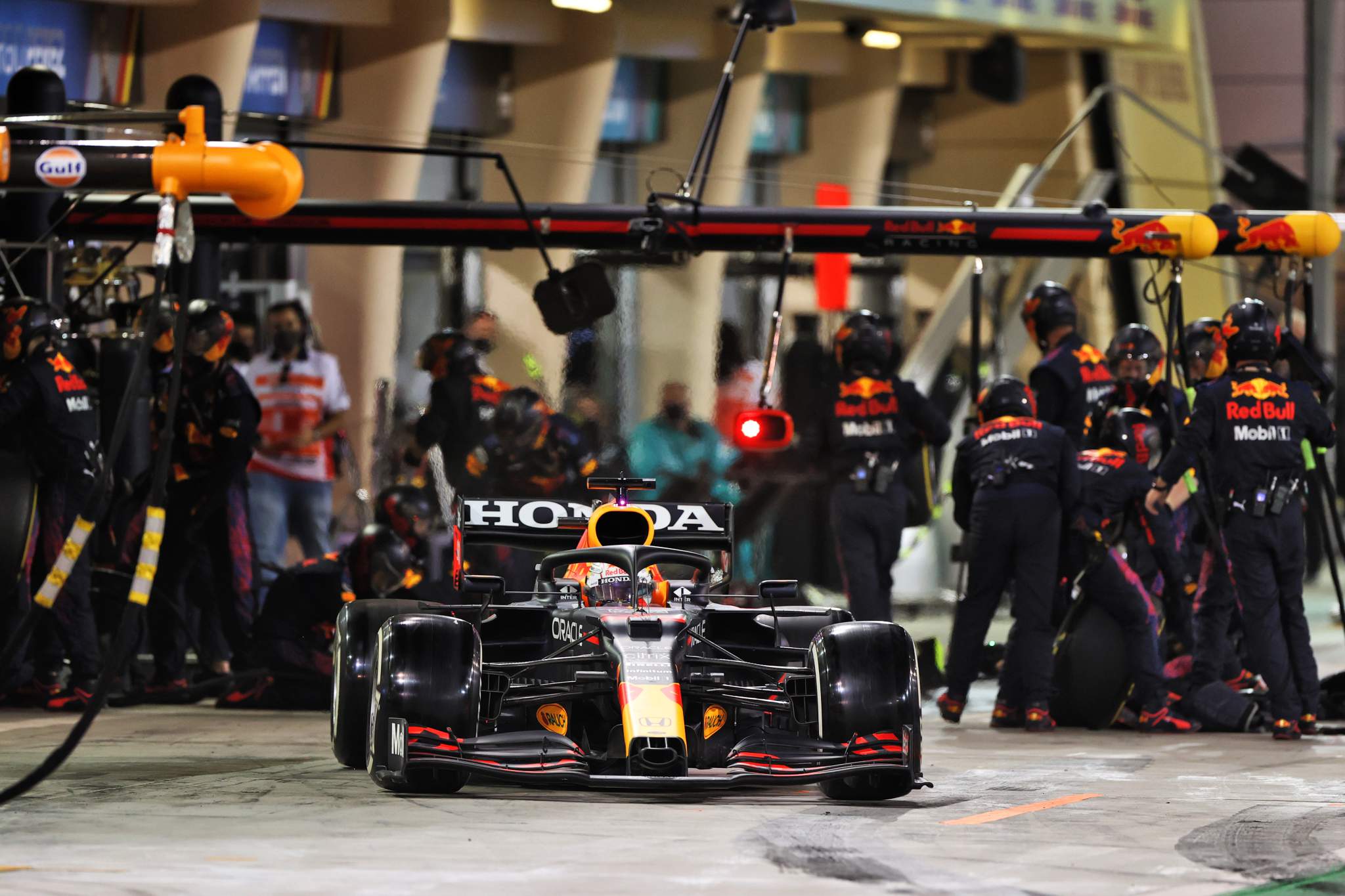
His first flying lap gained him 1.2s on the Mercedes, then 0.8s, 0.7s, 0.9s, 0.5s, 0.8s. He was surely going to catch him. Hamilton was resolved to fight it out, knowing Verstappen would be with him soon enough and not really rating his chances of keeping him behind.
Meanwhile, a long way behind Bottas, Norris continued to dominate the best-of-the-rest contest, always just out of reach of Leclerc who in turn was never quite challenged by Ricciardo or Sainz. Perez would be among them soon enough but would run out of laps to catch Norris.
Alonso had retired with overheating brakes from debris in a duct. He’d diced with Stroll and been passed by Yuki Tsunoda who’d passed and left behind Kimi Raikkonen, with Sebastian Vettel, Esteban Ocon, Antonio Giovinazzi and George Russell following on.
Gasly was walking wounded in his damaged car, Nicholas Latifi’s Williams was sick and would retire, Mick Schumacher got the miles under his belt at the back after his Turn 4 spin early in the race. Ocon would go on to pass Vettel who then misjudged things and hit the Alpine into a spin, losing them places.
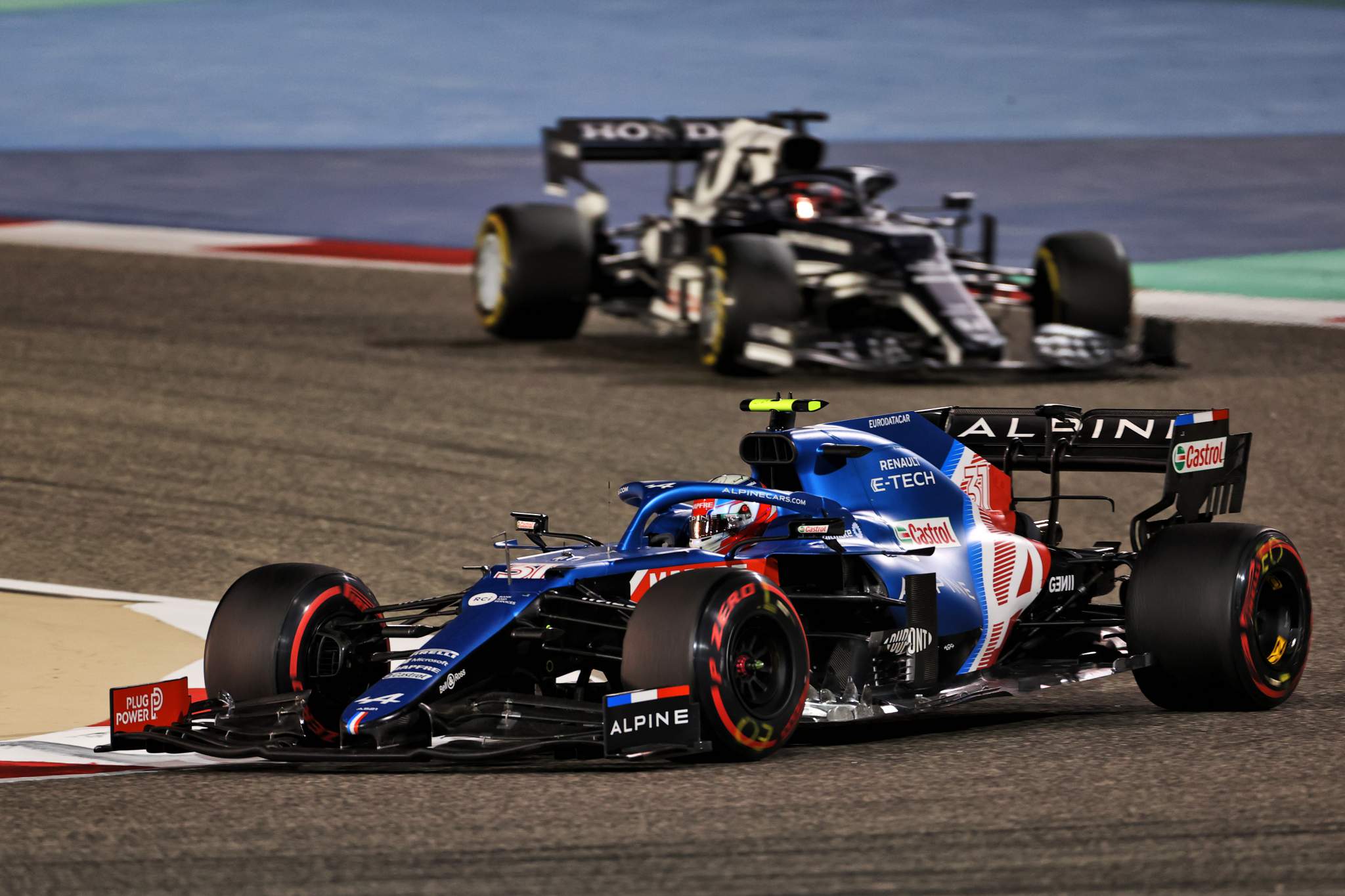
So Verstappen tracked the Mercedes down while trying to keep his tyres alive. Radio silence in both cockpits. It was down to them now. The battle of the ages, king and pretender.
On the 51st lap Hamilton locked up into the Mercedes’ bogey corner, Turn 10, and ran wide on the exit. That brought the gap down to under 1s and now Verstappen would get DRS. He wasn’t quite close enough going into the 52nd lap.
One lap later and he got partly alongside on the pit straight. Hamilton remained calm, placing the car perfectly, making Verstappen go the long way round. They were lapping Giovinazzi between there and Turn 4 and that made things a little awkward for Hamilton as Verstappen slipstreamed him.
Max hung on around the outside with more momentum and looked like he’d made the move, but ran all four wheels well off the track in completing it.
The whole boring business of track limits reared its head. Obviously an overtake completed by leaving the circuit is not legitimate. But drivers had been instructed that track limits at Turn 4 would not be monitored.
But Hamilton was taking full and specific advantage of this every lap until race control insisted he should stop doing so. So he did.
But that was different to using the run-off to overtake – and Verstappen was rightly instructed to hand the place back, which he did coming out of Turn 10.
He immediately set about attacking the Mercedes all over again but as he threw the car into Turn 13, the fast uphill right-hander, he had a big oversteer slide. The tyres were finished! He’d used them up in his chase and pass.
Hamilton could barely believe his luck as the Red Bull stopped challenging him. It stayed right there in his slipstream of course but it simply didn’t have the tyre grip to make a move.
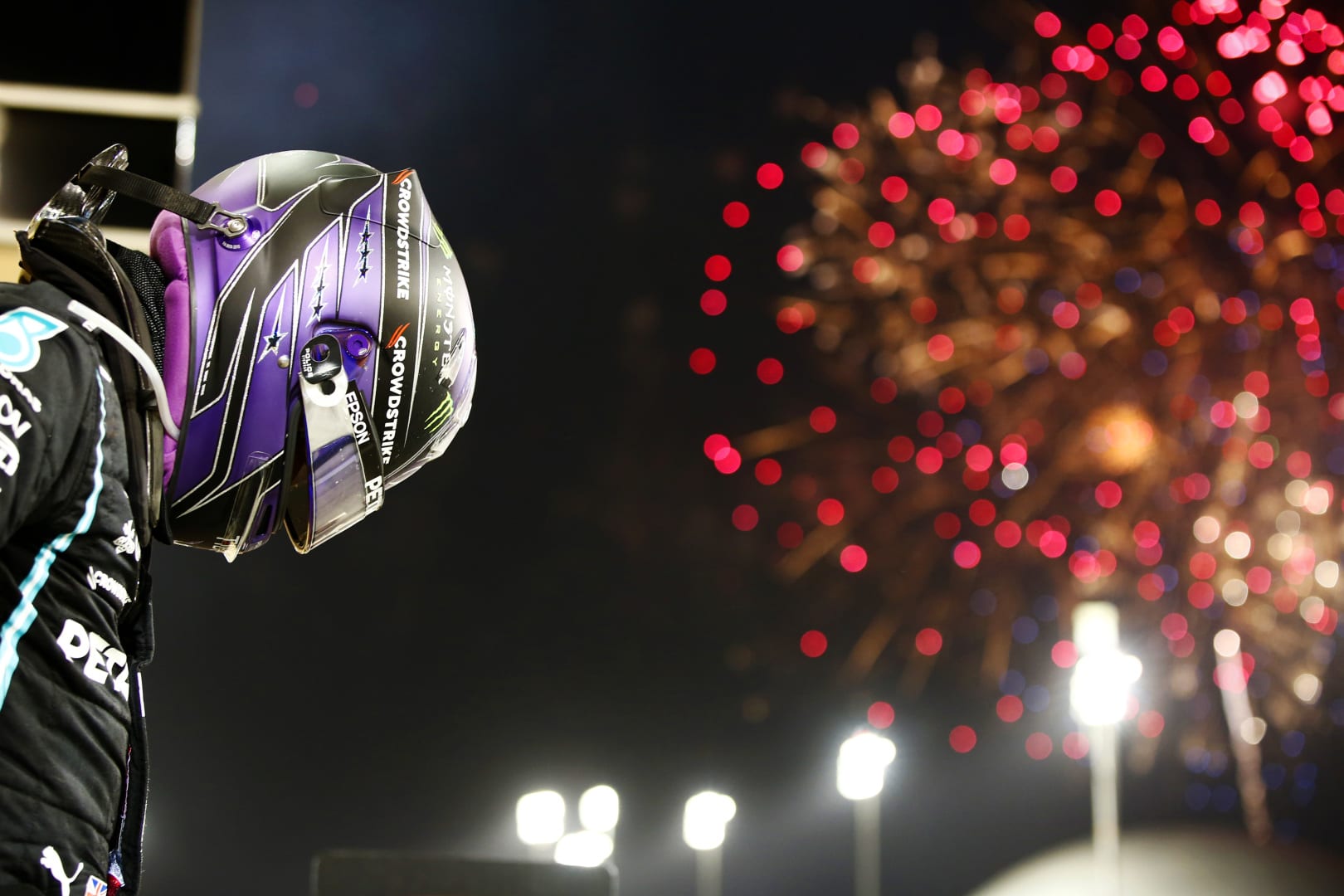
And like that Hamilton and Mercedes grinded out a victory against the odds. Verstappen was naturally disappointed. But there are surely going to be plenty more opportunities.
Bottas made a late free stop for fresh tyres so as to get the point for fastest lap. Norris drove superbly all evening to give McLaren fourth, the orange car always with just enough to keep ahead of Leclerc’s red one which succumbed to the flying Perez near the end.
Ricciardo was satisfied with seventh in a McLaren still very new to him, ahead of Sainz, with Tsunoda gaining points on his debut and passing Stroll for ninth on the last lap.
Race Results
| Pos | Name | Car | Laps | Laps Led | Total Time | Fastest Lap | Pitstops | Pts |
|---|---|---|---|---|---|---|---|---|
| 1 | Lewis Hamilton | Mercedes | 56 | 27 | 1h32m03.897s | 1m34.015s | 2 | 25 |
| 2 | Max Verstappen | Red Bull-Honda | 56 | 29 | +0.745s | 1m33.228s | 2 | 18 |
| 3 | Valtteri Bottas | Mercedes | 56 | 0 | +37.383s | 1m32.09s | 3 | 16 |
| 4 | Lando Norris | McLaren-Mercedes | 56 | 0 | +46.466s | 1m34.396s | 2 | 12 |
| 5 | Sergio Pérez | Red Bull-Honda | 56 | 0 | +52.047s | 1m33.97s | 3 | 10 |
| 6 | Charles Leclerc | Ferrari | 56 | 0 | +59.09s | 1m34.988s | 2 | 8 |
| 7 | Daniel Ricciardo | McLaren-Mercedes | 56 | 0 | +1m06.004s | 1m34.932s | 2 | 6 |
| 8 | Carlos Sainz | Ferrari | 56 | 0 | +1m07.1s | 1m34.509s | 2 | 4 |
| 9 | Yuki Tsunoda | AlphaTauri-Honda | 56 | 0 | +1m25.692s | 1m34.761s | 2 | 2 |
| 10 | Lance Stroll | Aston Martin-Mercedes | 56 | 0 | +1m26.713s | 1m34.865s | 2 | 1 |
| 11 | Kimi Räikkönen | Alfa Romeo-Ferrari | 56 | 0 | +1m28.864s | 1m35.192s | 2 | 0 |
| 12 | Antonio Giovinazzi | Alfa Romeo-Ferrari | 55 | 0 | +1 lap | 1m35.122s | 2 | 0 |
| 13 | Esteban Ocon | Alpine-Renault | 55 | 0 | +1 lap | 1m35.25s | 2 | 0 |
| 14 | George Russell | Williams-Mercedes | 55 | 0 | +1 lap | 1m35.036s | 2 | 0 |
| 15 | Sebastian Vettel | Aston Martin-Mercedes | 55 | 0 | +1 lap | 1m35.566s | 1 | 0 |
| 16 | Mick Schumacher | Haas-Ferrari | 55 | 0 | +1 lap | 1m36.134s | 2 | 0 |
| Pierre Gasly | AlphaTauri-Honda | 51 | 0 | DNF | 1m34.09s | 2 | 0 | |
| Nicholas Latifi | Williams-Mercedes | 50 | 0 | DNF | 1m36.602s | 3 | 0 | |
| Fernando Alonso | Alpine-Renault | 31 | 0 | DNF | 1m36.063s | 3 | 0 | |
| Nikita Mazepin | Haas-Ferrari | 1 | 0 | DNF | 0s | 0 | 0 |









